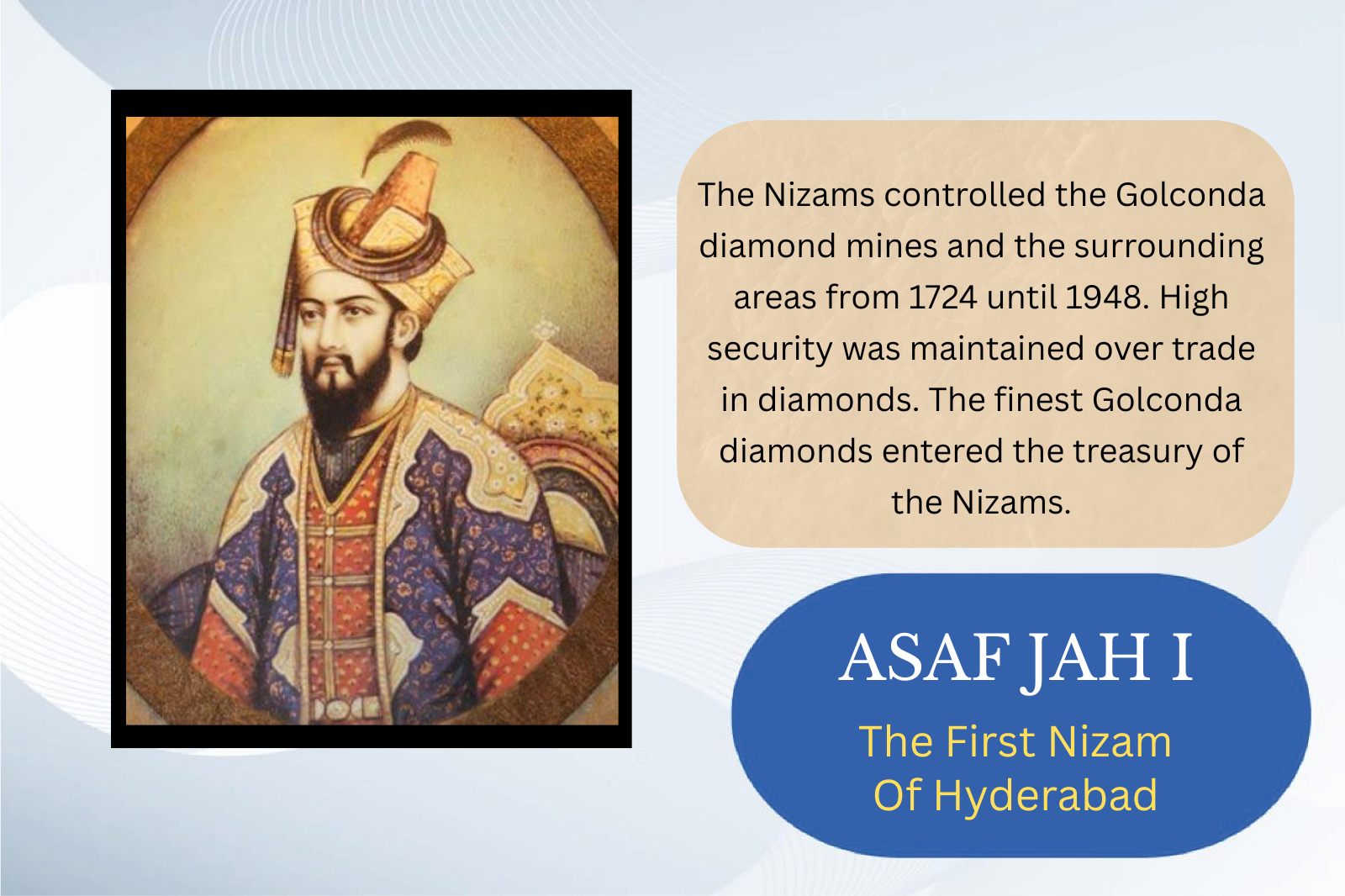The Quest For Golconda Diamonds
The Golconda diamond mines have long been exhausted, yet the allure of their legendary diamonds endures, making them among the most coveted diamonds in the world. Under Mughal control until 1724, the Golconda diamond mines came under the dominion of the Nizams when Asaf Jah I established his rule.

HIGH QUALITY DIAMONDS
Renowned for their unmatched purity and brilliance, the Golconda diamond mines gave rise to some of the most legendary diamonds in history. The five valuable Golconda diamonds include Koh-i-Noor, Hope Diamond, The Seraphim Blue Diamond, Regent Diamond and the Wittelsbach-Graff Diamond. Of these diamonds, the Seraphim Blue Diamond has never come up at any high profile auction. This could explain why, the name of this Golconda blue diamond has limited recognition.
Using a few technical concepts, to explain the formation of the diamonds in the Golconda mines. Most Golconda diamonds belong to the Type IIa category — the purest form of diamond with almost no nitrogen impurities. These diamonds were formed at a depth of around 150–200 kilometers beneath the Earth's surface. Pure carbon atoms crystallized into diamond under extreme high temperature (900–1,300°C) conditions.
It has been scientifically confirmed that Golconda diamonds, were formed over a billion years ago. White (colorless) diamonds from the Golconda diamond mines, are of a very high quality. Only about 1–2% of all diamonds in the world are Type IIa. Golconda mines produced a disproportionately high number of these. These diamonds are exceptionally transparent and have a D-color rating, this is one of the highest color grades. In the diamond trade it is often mentioned that, Golconda diamonds are ‘whiter than white’!
FANCY COLOR DIAMONDS
A small fraction of Golconda diamonds contained traces of boron, a natural impurity that imparted a striking blue hue to the gems. In the case of fancy color diamonds — particularly rare hues like pink and blue — the intensity, purity, and distribution of color are the most critical value factors. Clarity, which is important for white diamonds, takes on less significance in comparison.
DIAMOND TURBAN ORNAMENTS
The rarity and desirability of fancy color diamonds from the Golconda mines, can be gauged from an interesting narration. Rumors claim that, Asaf Jah 1 the first Nizam of Hyderabad (1724) had a fine collection of turban ornaments. The Nizam gave special attention to two of these ornaments, one with a blue diamond in the center and the other with a pink diamond. Both diamonds were apparently mined in the Golconda diamond mines. Analyzing diamond turban ornaments from those times, it is estimated that the diamonds would have been in the 7 to 9 carat size range.
The interesting thing about these rumors is that, they all have a similar narrative. Experts might see more than a fantasy fairytale here but, the real excitement will pulsate only when - reliable documentation is availble and the actual Golconda bluediamond is available for inspection. The spectacular world of historic diamonds, might get a glance of the Seraphim Blue Diamond that, has not been seen for centuries.
While these are not considered to be a very big size especially considering that, the Nizam’s collection included some very big diamonds – reports claim that, the 2 color diamonds, were had a fine color and impressive clarity. Neither of these diamonds have made an appearance for centuries.
GOLCONDA DIAMONDS LEGACY
The historical legacy, exceptional beauty, and rarity of Golconda diamonds have made them highly sought after even today. What adds even greater allure to a Golconda diamond is a royal provenance — especially when the gem can be traced back to the opulent courts of the Mughal emperors or the Nizams of Hyderabad.
